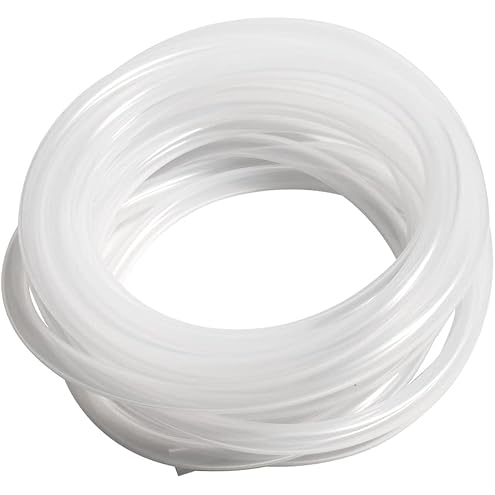
The Complete Guide to Silicone Hose Sizes and Dimensions: Choosing the Perfect Fit for Your Application
Optimizing Your Industrial Selection—From Micro Medical Tubes to Large Industrial Transfer Hoses
Silicone hoses are widely used in industrial, medical, and daily life applications due to their exceptional properties. Whether transferring chemicals, food, pharmaceuticals, or high-temperature fluids, selecting the right size and dimension is crucial. This article provides a comprehensive guide to silicone hose specifications and dimensions to help you make informed decisions.
Overview of Basic Properties of Silicone Hoses
Silicone hoses are made from raw silicone rubber mixed with silica and other additives through specific processes, offering advantages such as flexibility, high temperature resistance, and stable performance. Key characteristics include:
- Wide temperature range: Typically from -60℃ to 200℃ for continuous use, with some products withstanding -51℃ to 238℃ or even higher temperatures. Platinum-cured silicone with glass fiber reinforcement can withstand temperatures up to 260℃.
- Excellent physical properties: Tensile strength ≥3.5MPa, elongation at break ≥210%. High-strength silicone hoses can have an elongation at break point of 450% – 540% and a maximum tear resistance of 34Kn/m.
- Safety and environmental compliance: Conforms to FDA, USP, USDA, NSF, and other food and medical-grade certification standards. Some meet USP Class VI and European Pharmacopoeia standards.
- Good electrical insulation: Dielectric strength ≥18kV/mm, volume resistivity ≥1×10¹⁴Ω·cm.
Silicone Hose Specification and Dimension Representation Methods
Silicone hose specifications are represented in several ways:
1. ID×OD Representation Method
This is the most direct representation. For example, “1×1” indicates an inner diameter of 1mm and outer diameter of 1mm; “3×1” indicates an inner diameter of 3mm and wall thickness of 1mm (OD = ID + 2 × wall thickness).
2. Specification Code Representation Method
Many manufacturers use codes to represent specifications, such as 13#, 16#, 25#, etc. These codes correspond to specific inner diameters and wall thicknesses.
3. Imperial Unit Representation Method
In some industrial fields, imperial units are still commonly used, such as 1/4″, 3/8″, 1/2″, etc.
Common Silicone Hose Specification Dimension Tables
Small Silicone Hose Specifications (For Medical, Laboratory Applications)
| Tube Code | Inner Diameter (mm) | Wall Thickness (mm) | Application Fields |
|---|---|---|---|
| 13# | 0.8 | 1.6 | Micro-transfer, laboratories |
| 14# | 1.6 | 1.6 | Medical devices, laboratory instruments |
| 19# | 2.4 | 1.6 | Analytical instruments, medical devices |
| 16# | 3.2 | 1.6 | Medical equipment, laboratories |
| 25# | 4.8 | 1.6 | General medical equipment |
Medium Silicone Hose Specifications (For General Industrial Applications)
| Specification | Inner Diameter (mm) | Outer Diameter (mm) | Working Pressure (bar) |
|---|---|---|---|
| 1/4″ | 6 | 15 | 20 |
| 5/16″ | 8 | 17 | 20 |
| 3/8″ | 10 | 19 | 20 |
| 1/2″ | 12.7 | 22 | 20 |
| 5/8″ | 16 | 25 | 20 |
Large Silicone Hose Specifications (For Industrial Transfer Applications)
| Inner Diameter (mm) | Outer Diameter (mm) | Working Pressure (bar) | Temperature Range (℃) |
|---|---|---|---|
| 25.4 | 34.5 | 3.0 | -60~200 |
| 32 | 41 | 2.5 | -60~200 |
| 38.1 | 47 | 20 | -60~220 |
| 50.8 | 60 | 10 | -60~220 |
| 76 | 85 | 8.0 | -60~220 |
| 102 | 111 | 8.0 | -60~220 |
Reinforced Silicone Hose Specifications
<极简版>
| Code | Inner Diameter (in.) | Inner Diameter (mm) | Outer Diameter (mm) | Working Pressure (bar) |
|---|---|---|---|---|
| PF005 | 3/16 | 4.8 | 10 | 12 |
| PF013 | 1/2 | 12.7 | 20.5 | 6 |
| PF025 | 1 | 25.4 | 34.5 | 3 |
| GF003 | 1/8 | 3 | 9 | 21 |
| GF013 | 1/2 | 12.7 | 22 | 11 |
| GF025 | 1 | 25.4 | 38 | 6 |
How to Select the Right Silicone Hose Size
Selecting the appropriate silicone hose specification requires consideration of the following factors:
1. Flow Requirements
Choose the inner diameter size based on flow requirements. The inner diameter of the hose directly determines the flow capacity – larger inner diameters allow greater flow.
2. Pressure Parameters
Peristaltic pump applications are limited by the pressure-bearing performance of the hose. Once the hose’s pressure limit is reached, it will expand, causing excessive wear or direct rupture.
3. Temperature Environment
Select the appropriate silicone hose based on the temperature range of the application environment. Different silicone hose formulations have varying temperature resistance properties.
4. Chemical Compatibility
Test the compatibility between the hose and the transfer medium through immersion tests by placing a section of hose in the solution for 48 hours and observing for discoloration, swelling, rupture, or other damage.
5. Certification Requirements
Select hoses with appropriate certifications based on the application field, such as USP, EP, FDA, USDA, NSF certifications.
6. Flexibility, Elasticity, and Service Life
For hoses used in peristaltic pumps, the Shore hardness is typically 40-80A. The service life varies depending on the hose material and usage environment.
Special Purpose Silicone Hose Specifications
1. Reinforced Silicone Hoses
For high-pressure applications, braided reinforced silicone hoses can be used, such as those with four-layer polyester fabric reinforcement, with working pressures up to 20 bar.
Special requirements for the electronics industry, featuring conductive properties.
3. Food-Grade Silicone Hoses
Using platinum curing process, complying with food-grade certifications, suitable for food, pharmaceutical and other industries.
Usage and Maintenance of Silicone Hoses
Bend Radius Requirements
According to national standards, the minimum bend radius standard for silicone hoses is not less than 8 to 10 times the outer diameter of the hose to avoid damage caused by excessive bending.
Service Life
In normal temperature environments, high-quality silicone hoses can be used for more than ten years. Actual lifespan depends on usage environmental conditions.
Conclusion
Selecting the appropriate silicone hose specifications and dimensions is crucial for ensuring proper system operation. By understanding various specification parameters and their significance, you can make the best choice based on specific application requirements. Whether for micro medical devices or large industrial transfer systems, there’s a silicone hose to meet your needs.
It’s recommended to obtain samples from suppliers for actual testing before final selection to ensure the hose perfectly matches your application. The correct choice will ensure efficient and safe system operation while extending equipment service life.

